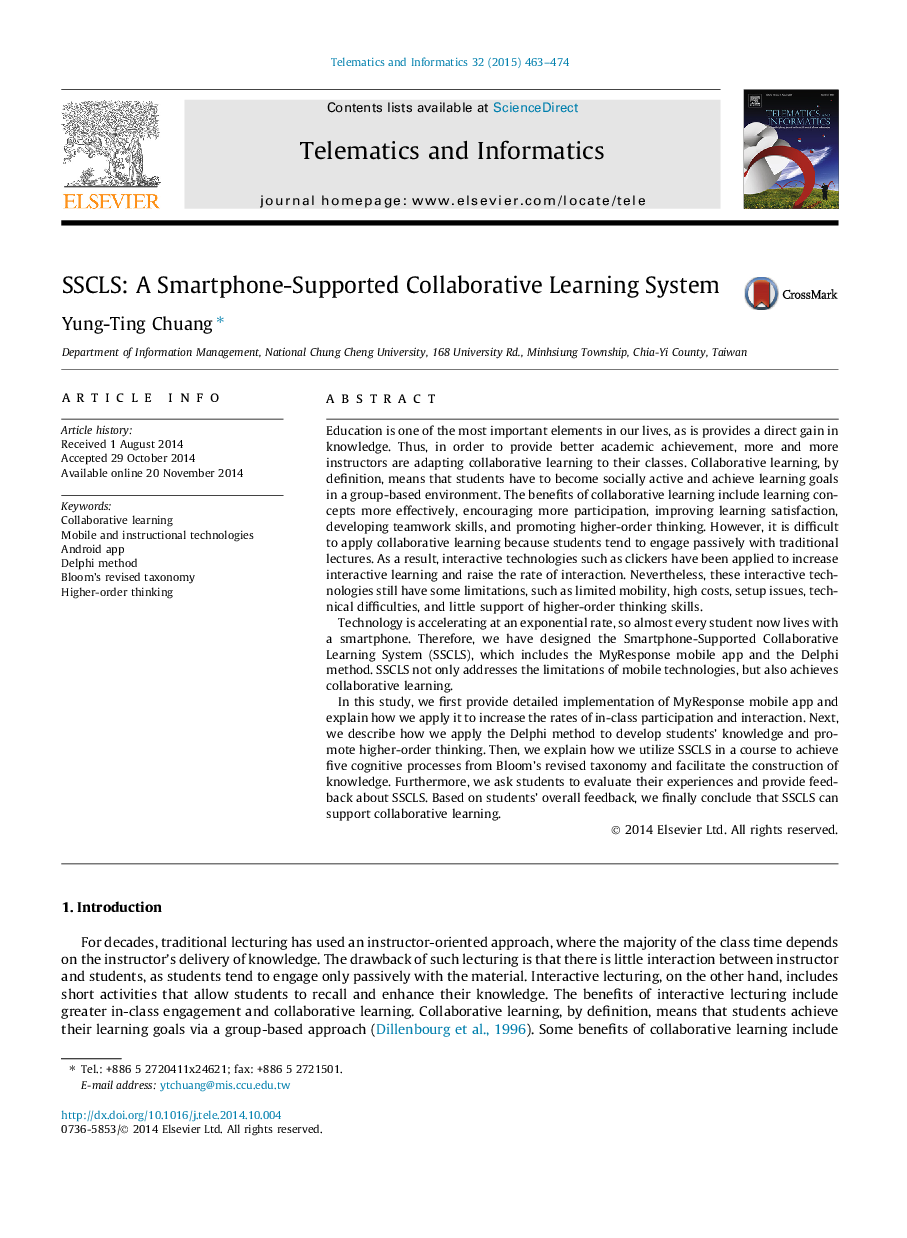| Article ID | Journal | Published Year | Pages | File Type |
|---|---|---|---|---|
| 464364 | Telematics and Informatics | 2015 | 12 Pages |
•Our SSCLS includes MyResponse and Delphi method to achieve collaborative learning.•Our user-friendly mobile app, MyResponse, encourages greater in-class participation.•We utilize Delphi method to develop students’ knowledge and higher-order thinking.•We utilize SSCLS to achieve five cognitive processes from Bloom’s revised taxonomy.
Education is one of the most important elements in our lives, as is provides a direct gain in knowledge. Thus, in order to provide better academic achievement, more and more instructors are adapting collaborative learning to their classes. Collaborative learning, by definition, means that students have to become socially active and achieve learning goals in a group-based environment. The benefits of collaborative learning include learning concepts more effectively, encouraging more participation, improving learning satisfaction, developing teamwork skills, and promoting higher-order thinking. However, it is difficult to apply collaborative learning because students tend to engage passively with traditional lectures. As a result, interactive technologies such as clickers have been applied to increase interactive learning and raise the rate of interaction. Nevertheless, these interactive technologies still have some limitations, such as limited mobility, high costs, setup issues, technical difficulties, and little support of higher-order thinking skills.Technology is accelerating at an exponential rate, so almost every student now lives with a smartphone. Therefore, we have designed the Smartphone-Supported Collaborative Learning System (SSCLS), which includes the MyResponse mobile app and the Delphi method. SSCLS not only addresses the limitations of mobile technologies, but also achieves collaborative learning.In this study, we first provide detailed implementation of MyResponse mobile app and explain how we apply it to increase the rates of in-class participation and interaction. Next, we describe how we apply the Delphi method to develop students’ knowledge and promote higher-order thinking. Then, we explain how we utilize SSCLS in a course to achieve five cognitive processes from Bloom’s revised taxonomy and facilitate the construction of knowledge. Furthermore, we ask students to evaluate their experiences and provide feedback about SSCLS. Based on students’ overall feedback, we finally conclude that SSCLS can support collaborative learning.
